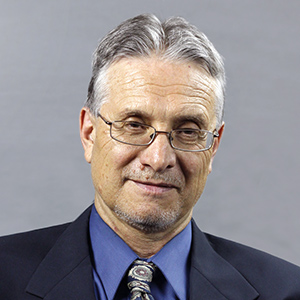Dr. Xiangguo Qiu and her husband Keding Cheng have not been seen publicly since February 2020, six months after they were stripped of their security clearances at Canada’s National Microbiology Laboratory (NML) in Winnipeg, Manitoba. Former colleagues are now speaking out on Dr. Qui’s behalf, as the mystery points to “larger issues” at the NML itself, according to a July 8 CBC report.
“This is a misunderstanding and I don’t know why I was walked out of the building”—speaking for Qiu was former colleague Gary Kobinger, who headed the special pathogens unit at the NML until 2016. “She didn’t understand,” Kobinger told the CBC. “She was, from the bottom of her heart, saying that this is a misunderstanding.”
According to Kobinger, on her trips to China, Qiu was only “doing a lot of the same work we used to do ... testing molecules and vaccines from other labs.” China gave Qiu credit for her work but neither the NML or the Public Health Agency of Canada (PHAC) were named on the two patents. In Canada, the federal government owns inventions made by public employees, who are forbidden from filing patents outside the country without permission. Kobinger told the CBC Qiu was “unaware that her name had been added to the patents,” and that “she herself reported the second one to PHAC.”
The CBC declined to identify another former NML scientist, “because he’s concerned about retribution from PHAC.” According to that NML veteran, security clearances take years to obtain but “upper management will sometimes skirt around that.” The unnamed scientist saw “people wandering around where they shouldn’t be,” and at times “they can walk around and do what they want.”
Dr. Qiu could not have authorized security clearances for any of her Chinese students. According to the unnamed scientist, NML management would have to approve the clearances and “they have a lot of problems they are trying to cover up.” One of those problems involves Chinese graduate student Feihu Yan. According to the CBC report, “publications authored by Qiu and Yan going back to at least 2016 list Yan’s connection to the Academy of Military Medical Sciences, an arm of the People’s Liberation Army (PLA).”
Both scientists who spoke with CBC News, “assert that the research at the NML is actually behind China in terms of technology and discovery, so there is nothing to steal.” Other accounts suggest that, when it came to deadly pathogens, there was nothing left to steal.
One of the first to link the COVID-19 pandemic to China’s biological weapons program was Dr. Dany Shoham, a former senior analyst in military intelligence for the Israel Defense Forces. Shoham earned a PhD in medical microbiology from Tel Aviv University and has published numerous articles on virology and on chemical and biological weapons.
In his January 2020 paper, “China and Viruses: The Case of Dr. Xiangguo Qiu,” Shoham notes that Qiu maintained a close bond with China and the students that joined her at the NML came from four facilities believed to be involved in Chinese biological weapons development: the Institute of Military Veterinary, Academy of Military Medical Sciences, in Changchun; the Center for Disease Control and Prevention, Chengdu Military Region; the Wuhan Institute of Virology, Chinese Academy of Sciences, in Hubei; and the Institute of Microbiology, Chinese Academy of Sciences, in Beijing.
“All four facilities collaborated with Qiu on her Ebola research,” Shoham explains, and Chinese interest in Ebola, Nipah, Marburg, and Rift Valley fever “might possibly be beyond scientific and medical needs.” Since only the Nipah virus is naturally found in China, “the interface between Qiu and China is a priori highly suspicious.” Shoham also wondered what other shipments of viruses or other items might have been made to China between 2006 and 2018.
In 2017-18 alone, Qiu made at least five trips to the Wuhan lab, and in August 2017, the National Health Commission of China approved research activities involving the Ebola, Nipah, and Crimean-Congo hemorrhagic fever viruses at the Wuhan facility. When her shipment of pathogens was discovered, Qiu and her husband Keding Cheng were “escorted” from the NML by the Royal Canadian Mounted Police (RCMP) and eventually dismissed from the Public Health Agency of Canada. The PHAC declines to answer questions about the transfer of deadly pathogens and Qiu’s work at the NML.
“It appears that what you might well call Chinese agents infiltrated one of the highest prized national security elements when it comes to biosecurity and biodefence,” security expert Christian Leuprecht of Canada’s Royal Military College told the CBC last month. On the other hand, Qiu’s former NML colleagues told CBC that “China is ahead in technology and discovery, so there was nothing to steal,” and Qiu was “unaware” that her name had been added to a patent held by China’s Communist regime.
The CBC could not reach Qiu and Cheng for comment. But according to the July 8 CBC report, a “young man” answered the door at Qiu’s Winnipeg residence. “I can relay your message,” he told reporters, “but no guarantees.” Canada’s Royal Canadian Mounted Police (RCMP) and the Canadian Security Intelligence Service (CSIS) decline to comment, despite mounting pressure from politicians.
In the CBC interview, “someone else” read the words of the second NML scientist, who remains unidentified. Gary Kobinger directs the Infectious Disease Research Centre at Université Laval in Québec. In September, Dr. Kobinger will become the director of the Galveston National Laboratory of the University of Texas Medical Branch.








